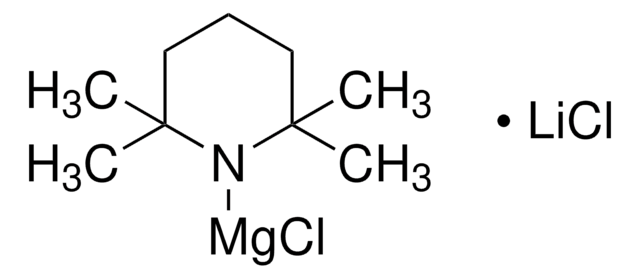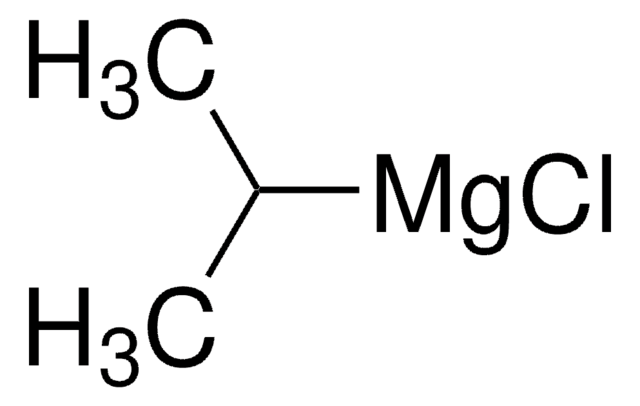703516
Zinc chloride solution
1.9 M in 2-methyltetrahydrofuran
Sinonimo/i:
Dichlorozinc
About This Item
Prodotti consigliati
Stato
liquid
Livello qualitativo
Impiego in reazioni chimiche
reagent type: catalyst
core: zinc
Caratteristiche più verdi
Catalysis
Learn more about the Principles of Green Chemistry.
sustainability
Greener Alternative Product
Concentrazione
1.9 M in 2-methyltetrahydrofuran
25 % (w/w)
Densità
1.07 g/mL at 25 °C
Categoria alternativa più verde
, Aligned
Stringa SMILE
Cl[Zn]Cl
InChI
1S/2ClH.Zn/h2*1H;/q;;+2/p-2
JIAARYAFYJHUJI-UHFFFAOYSA-L
Cerchi prodotti simili? Visita Guida al confronto tra prodotti
Descrizione generale
Applicazioni
2-Methyltetrahydrofuran (2-MeTHF): A Biomass-Derived Solvent with Broad Application in Organic Chemistry
Avvertenze
Danger
Indicazioni di pericolo
Consigli di prudenza
Classi di pericolo
Acute Tox. 4 Oral - Aquatic Acute 1 - Aquatic Chronic 1 - Eye Dam. 1 - Flam. Liq. 2 - Skin Corr. 1B - STOT SE 3
Organi bersaglio
Respiratory system
Rischi supp
Codice della classe di stoccaggio
3 - Flammable liquids
Classe di pericolosità dell'acqua (WGK)
WGK 3
Punto d’infiammabilità (°F)
10.4 °F - closed cup - Solvent
Punto d’infiammabilità (°C)
-12 °C - closed cup - Solvent
Dispositivi di protezione individuale
Faceshields, Gloves, Goggles, type ABEK (EN14387) respirator filter
Scegli una delle versioni più recenti:
Possiedi già questo prodotto?
I documenti relativi ai prodotti acquistati recentemente sono disponibili nell’Archivio dei documenti.
I clienti hanno visto anche
Articoli
Colloidal quantum dots (CQDs) are semiconducting crystals of only a few nanometers (ca. 2–12 nm) coated with ligand/surfactant molecules to help prevent agglomeration.
Il team dei nostri ricercatori vanta grande esperienza in tutte le aree della ricerca quali Life Science, scienza dei materiali, sintesi chimica, cromatografia, discipline analitiche, ecc..
Contatta l'Assistenza Tecnica.








